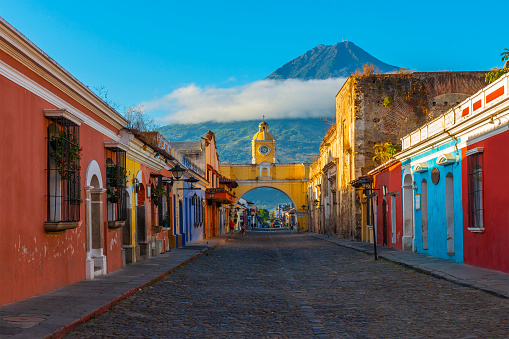
On a trip to Guatemala you will discover a culture that reflects strong Mayan and Spanish influences, and that continues to be defined as a contrast between poor Mayan villagers in the rural highlands, and the urbanized and relatively wealthy mestizos population (known in Guatemala as ladinos) who occupy the cities and surrounding agricultural plains. With the arrival of the Spanish conquistadores, power was transferred to the foreigners, and their mixed-race descendants, the ladino, became the new powerful families of Guatemala. Unlike in much of the rest of the New World, however, the Europeans did not completely marginalize or supplant the indigenous people, but rather formed an uneasy alliance.

While Spanish became the official language mandated in schools, various Mayan languages never died out, and are still widely-spoken throughout the highlands today. The music of Guatemala comprises several styles and expressions. The Maya had an intense musical practice. Guatemala was also one of the first regions in the New World to be introduced to European music, beginning in 1524. Many composers from the Renaissance, baroque, classical, romantic, and contemporary music styles have contributed works of all genres, of very high quality. The marimba is Guatemala’s national instrument. The marimba is made of keys or bars (usually made of wood) that produce musical tones when struck with mallets. The keys are arranged as those of a piano, with the accidentals raised vertically and overlapping the natural keys to aid the performer both visually and physically.
Although Spanish is the official language, it is not universally spoken among the indigenous population, nor is it often spoken as a second language. During a Guatemala trip you may hear up to twenty-one distinct Mayan languages are spoken, especially in rural areas. In addition, there are several non-Mayan Amerindian languages, such as the indigenous Xinca, and Garifuna, an Arawakan language spoken on the Caribbean coast.
The Maya peoples are known for their brightly colored yarn-based textiles, which are woven into capes, shirts, blouses, and dresses. Each village has its own distinctive pattern, making it possible to distinguish a person’s hometown on sight. Women’s clothing consists of a shirt (camisa) and a long skirt (falda).
Ixchel Spanish School
Ixchel Spanish School in Antigua Guatemala has been in business continuously since 1999 and we are recommended by thousands of satisfied students as well as all major travel guides. The quality of our Spanish programs is second to none! Most important, since the lessons are one on one, we can adapt them to your needs, interests and learning style. Besides our general Spanish programs for students of all levels we also offer special courses for professionals, travelers, volunteers and children. And if you can’t travel to Guatemala to take part in an immersion course or want to continue working on your Spanish after you return home, you can take our online Spanish courses via Skype!


